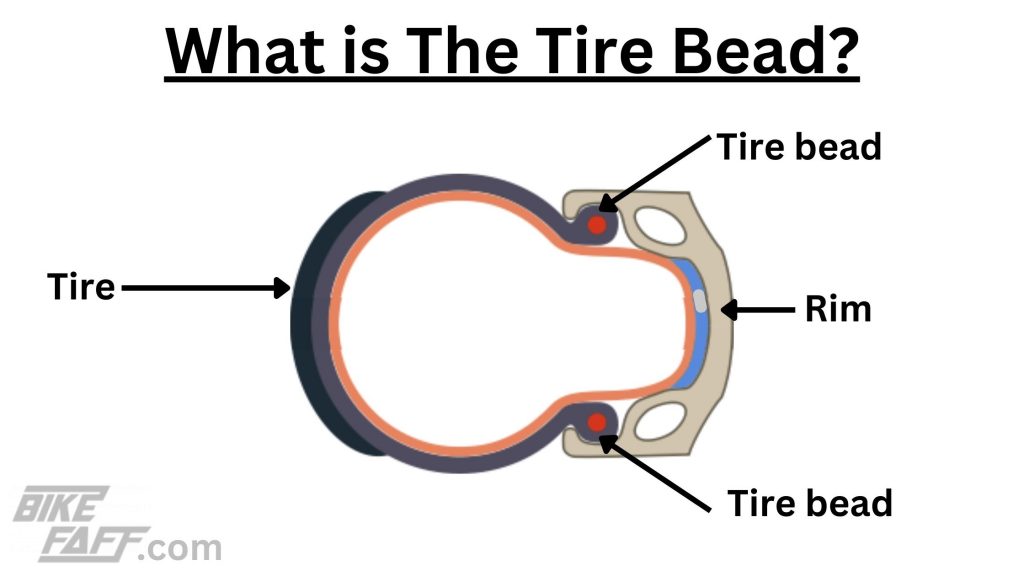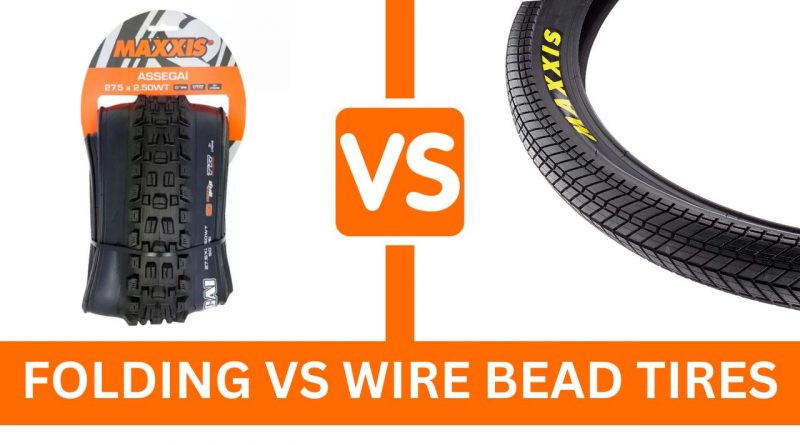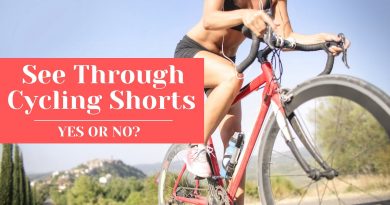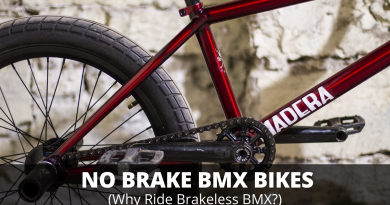Folding vs Wire Bead Tires (Which To Choose)
If you are looking to buy new tyres for your bike you are probably wondering if you should buy folding or wire bead tires. In this article, we walk you through everything you need to know about folding vs wire bead tires, and which one will best suit your needs.
Armed with this information, you will better understand if folding or wire bead tires are ideally suited to you. Let’s dive in!
- What is the Bead on a Bike Tire?
- What's the Difference Between Folding and Non-Folding Tires?
- Folding vs Wire Bead Tires, Which to Choose?
- TPI Count (Threads per Inch)
- How to Tell the Difference Between Folding Bead and Wire Bead Tires?
- Can Wire Bead Tires Be Tubeless?
- Are Wire Bead Tires Harder to Install?
- What Are the Most Common Mountain Bike Tire Brands?
- Final Thoughts (Which Tires are Better, Wired or Folding?)
What is the Bead on a Bike Tire?
Most bikes use what are known as “clincher” tires. These can be spotted by their horseshoe-shaped profile. When they are inflated, the beads of the tire grip – or “clinch” – to the rim of the wheel. The hooked lip of the tire known as the bead helps keep the tire securely fixed to the rim.
The bead that is used to hold the tire in place is what is referred to when people discuss folding and wired tires.

What’s the Difference Between Folding and Non-Folding Tires?
The terms “folding” and “wired” refer to the type of bead used on bike tires.
- Wire beads are made from steel wire
- Folding beads are made from Kevlar or other synthetic material
Wire beads are very stiff and very rigid and rigid and are sometimes known as “rigid” tires. Folding tires have beads that are made from more flexible materials like kevlar, which are known to be more durable.
Folding vs Wire Bead Tires, Which to Choose?
Folding and wire bead tires are both perfectly good depending on your requirements, here we look at the advantages and disadvantages of both.
Benefits Of Folding Tires:
Flexibility
Folding tires are made from flexible kevlar so that they can be folded up easily. This allows them to be transported easily. The steel wire bead tires hold their shape and can take up lots of space. Their ability to be simply folded up means that they will take up minimal space, allowing more room for other supplies on big trips.
Weight
On average, folding tires can save 2 ounces (57grams) per wheel (although this does vary depending on make and model). This can help the bike perform better as there is less rotational mass, which helps make the bike feel more nimble and helps accelerate better.
Also, less weight helps make the bike perform better on longer rides, helping to save energy to you can enjoy the descents.
Rubber Compound
Folding tires often come with softer dual compounds of rubber. Softer compounds dramatically help with grip as they increase the surface area which contacts the trail. This improved grip can noticeably increase your riding speed, confidence and ultimately enjoyment. However, it’s worth noting that softer compound tires wear out much faster.
Puncture protection
Folding tires are often made from durable thick kevlar which can be more resistant to punctures than cheaper thin wire bead tires. This combined with a rim insert and running a tubeless setup system can dramatically reduce punctures. Check out our post on: How To Fit Tubeless Mountain Bike Tyres | 9 Simple Steps
Benefits Of Wired Tires:
Price
One of the biggest benefits of wire bead tires is that they are much cheaper than folding tires. So if you’re on a budget it could be worth investing in cheaper wire bead tires.
Compound
Wire bead tires normally have a harder compound rubber, which does offer less grip, but can last long especially if you are doing lots of gondola/uplift riding. Which can be a big benefit to your wallet.
Less Rim RoAre wire bead tires harder to install?ll
Some folding tires are well known to roll on the rim at lower pressures, wire bead tires can help improve the side wall stiffness which can help reduce the tires rolling on the rim at lower pressures.

TPI Count (Threads per Inch)
Foldable tires often feature a higher TPI (threads per inch, count). This refers to the density of nylon or rubber threads per inch of the tire. This helps to make them more flexible and improves traction. The higher-end foldable tires feature a TPI count of 60+ (60 threads per inch). Wired tires often do not include a TPI count, or if they do it is very low.
How to Tell the Difference Between Folding Bead and Wire Bead Tires?
Folding bead tires will fold or bend and will not normally hold their round shape without a wheel. However, wire bead tires hold their circular shape without a wheel, and you cannot easily bend or fold them.
Can Wire Bead Tires Be Tubeless?
Yes, wire bead tires can be tubeless but they are uncommon. If you see UST or ‘Tubeless Ready on the tire wall it will be tubeless compatible, if not it is designed to be used with an inner tube.
There are kits available to convert non-tubless tires and rims to tubeless but if possible it’s much better to use tubeless compatible rims and tires.
Are Wire Bead Tires Harder to Install?
No, both wire bead and folding bead tires can be either hard to install depending on the rim and tire combination. Some rim & tyre combinations are notoriously hard to fit. However, many people do not know how to detention a tire correctly which can make it even harder.
What Are the Most Common Mountain Bike Tire Brands?
Final Thoughts (Which Tires are Better, Wired or Folding?)
Both wired and folding bead tires are perfectly fine. However, if you are looking for a hardwearing tire and you’re on a budget then a wire bead tire could be the best option. If you are looking for a light, grippy tire that offers good puncture protection then a folding tire is most likely your best option.
some related interesting links you might find help useful:




